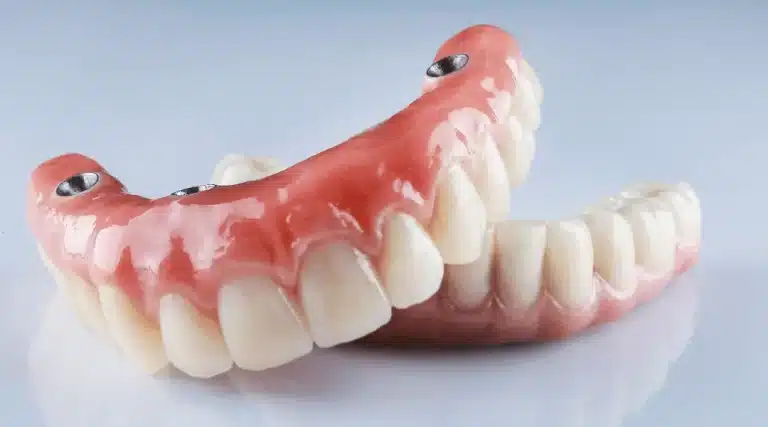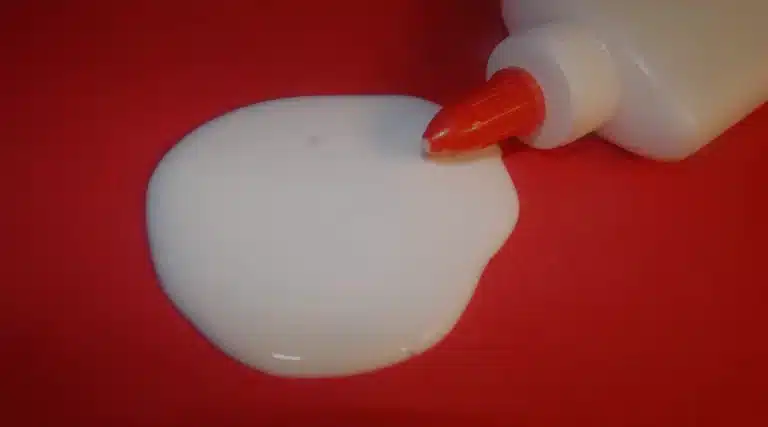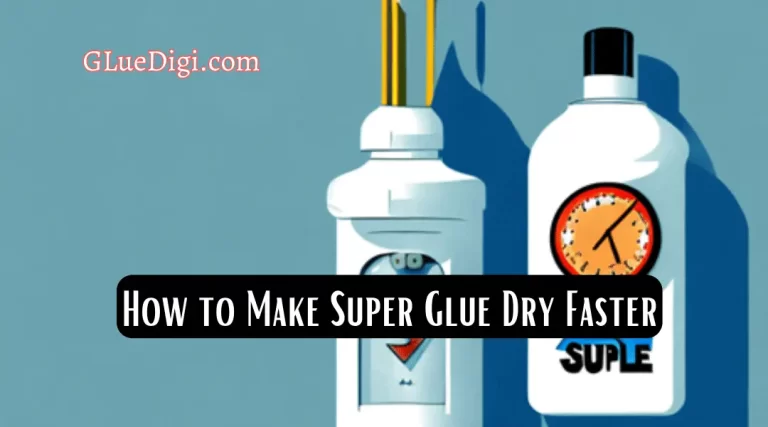Wood glue is a popular adhesive used in woodworking projects due to its strength and versatility. However, it is not uncommon for individuals to wonder if wood glue can be used on materials other than wood, such as plastic.
While the properties of both materials may seem vastly different at first glance, there are factors to consider when determining whether or not wood glue can effectively bond plastic.
This article will explore the properties of wood glue and plastic and examine the factors that determine whether or not they can be successfully bonded. Additionally, we will discuss the types of wood glues that are suitable for use on plastic and provide step-by-step instructions for using them effectively.
For those who are unsure about using wood glue on plastic or prefer alternative options, we will also offer suggestions for alternative adhesive options. By understanding the nature of these materials and their compatibility with adhesives, readers can make informed decisions when bonding plastics with wood glue or other alternatives.
Key Takeaways
- Material compatibility is crucial for maximum adhesion strength when using wood glue on plastic.
- Different types of plastic have varying levels of compatibility with wood glue, so the appropriate type of glue must be selected for each specific plastic material.
- Proper surface preparation is necessary for effective bonding, and temperature and humidity greatly affect the strength of the bond.
- Other adhesive options are available for bonding materials that cannot be effectively joined with wood glue, such as polyurethane glue, cyanoacrylate glue, epoxy, and acrylic adhesives.
Properties of Wood Glue and Plastic
The properties of wood glue and plastic must be considered before determining if the two materials can effectively bond, thereby ensuring a robust and durable adhesion. Adhesion challenges arise when bonding dissimilar materials such as wood and plastic due to differences in their chemical composition, surface energy, and coefficient of thermal expansion.
Wood glue is typically formulated to work with porous surfaces like wood or paper, while plastics have low surface energy that makes them non-porous. Therefore, it becomes essential to choose a compatible adhesive that can create lasting bonds between these two materials.
Material compatibility plays a crucial role in achieving maximum adhesion strength because not all types of glue are suitable for all plastics. The factors to consider include the type of plastic used, its surface preparation method, the curing time required for the glue, and environmental conditions during bonding.
Understanding these factors will help determine whether wood glue is an appropriate adhesive choice for bonding plastic surfaces without compromising safety or performance.
Factors to Consider
When considering the use of wood glue on plastic, several factors must be taken into account.
Firstly, the type of plastic being used is crucial as some plastics are unable to bond with certain types of adhesives.
Secondly, proper surface preparation is necessary for effective bonding and should not be overlooked.
Lastly, temperature and humidity can also affect the strength of the bond and must be considered during application.
These factors collectively play a vital role in determining whether wood glue can effectively bond with plastic materials.
Type of Plastic
Different types of plastic have varying levels of compatibility with wood glue, making it important to select the appropriate type of glue for each specific plastic material.
Some plastics, such as PVC and polycarbonate, do not bond well with wood glue due to their low surface energy and non-porous nature.
On the other hand, high-density polyethylene (HDPE) and polypropylene (PP) have a higher level of compatibility with wood glue due to their porous surfaces.
It is essential to consider the adhesive strength required for the intended application when choosing the appropriate wood glue for plastic bonding.
Using an incompatible adhesive may result in weak bonds or complete failure.
Therefore, proper consideration should be given to ensure that the selected adhesive has optimal performance on the specific type of plastic being used.
Moving on to surface preparation…
Surface Preparation
Proper surface preparation is crucial for achieving a strong bond between plastic and adhesive.
Before applying wood glue on plastic, it’s important to clean the surface thoroughly using a cleaning agent that won’t leave any residue.
This will ensure that the glue adheres properly onto the plastic surface.
Additionally, an adhesion promoter can be applied to increase the strength of the bond between the plastic and adhesive.
Adhesion promoters work by modifying or enhancing the surface properties of plastics, making them more receptive to bonding agents like wood glue.
It’s essential to follow these steps for optimal results when working with plastics and wood glues.
As we move into discussing temperature and humidity in our next section, it’s important to note that both factors can affect how well wood glue adheres onto plastic surfaces.
Temperature and Humidity
Temperature and humidity are critical factors to consider when bonding plastic and adhesives, as they can greatly affect the strength of the bond.
Humidity levels play a significant role in adhesion as it can impact the moisture content of the plastic materials. High humidity can cause plastic shrinkage, which reduces the surface area for bonding and affects glue strength. On the other hand, low humidity levels may lead to inadequate curing time for some types of adhesives, resulting in weaker bonds.
Temperature is also an important factor to consider as it affects both the viscosity of glue and its curing time. Extreme temperatures can cause damage to both plastics and adhesives, leading to weaker bonds or even complete failure. Therefore, it is important to ensure that temperature and humidity conditions are optimal before attempting any plastic-adhesive bonding process.
In the subsequent section about ‘types of wood glue suitable for plastic,’ we will explore which types of wood glue work best under different temperature and humidity conditions.
Types of Wood Glue Suitable for Plastic
One viable option for bonding plastic with wood glue is to use a type of adhesive specifically designed for plastics, such as polyurethane or cyanoacrylate.
These types of wood glues have several advantages when it comes to bonding plastic, including their ability to provide a strong and durable hold, resist moisture and temperature changes, and dry clear.
Polyurethane glue is ideal for bonding porous materials like plastic as it expands slightly as it dries, filling any gaps between the surfaces being bonded.
Cyanoacrylate glue, on the other hand, works by creating an incredibly strong bond almost instantly upon contact.
When using either type of wood glue on plastic, proper surface preparation is crucial to ensure maximum adhesion. This includes cleaning the surfaces thoroughly and roughening them up with sandpaper or a similar abrasive material to create surface area for the glue to adhere to.
Steps for Using Wood Glue on Plastic
As we have previously discussed, there are certain types of wood glue that are suitable for plastic. However, it is important to know the correct steps to take when applying wood glue on plastic to ensure a successful bond.
Applying wood glue on plastic involves several tips and tricks that will help you achieve an effective result. It is crucial to avoid common mistakes such as using too much or too little adhesive, not cleaning the surface properly, or not allowing enough drying time before handling the glued parts.
With these in mind, you can confidently use wood glue on plastic for your DIY projects or repairs. In case this method does not work for your specific application, there are alternative adhesive options available that we will discuss in the next section.
Alternative Adhesive Options
Other adhesive options are available for bonding materials that cannot be effectively joined with wood glue, providing alternative solutions for specific applications. When considering using an adhesive on plastic, it is important to evaluate the pros and cons of each option as well as their cost comparison. One alternative adhesive option is cyanoacrylate or superglue which can bond different types of plastics together quickly and easily. However, it may not provide a strong bond over time and can be brittle when exposed to stress. Another option is epoxy which provides a strong bond but requires mixing two components together before application which can be time-consuming. Additionally, it may not work well on certain types of plastics such as polypropylene or polyethylene. A third option is acrylic adhesives which offer excellent bonding strength and are resistant to moisture, heat, and chemicals but can be more expensive than other alternatives. Overall, considering all factors including the type of plastic being bonded and the specific application requirements will help determine the best adhesive choice that balances effectiveness with cost efficiency.
| Adhesive Option | Pros | Cons |
|---|---|---|
| Cyanoacrylate (Superglue) | Quick bonding time; easy application | Brittle under stress; weak over time |
| Epoxy | Strong bond; versatile in use | Requires mixing two components; may not work on certain plastics |
| Acrylic Adhesives | Excellent bonding strength; resistant to moisture/heat/chemicals | More expensive than other alternatives |
Note: The table provided above shows some common alternative adhesive options for joining plastic materials along with their pros and cons for better evaluation of each option’s suitability based on one’s particular needs.
Conclusion
Wood glue is a popular adhesive used for joining pieces of wood together. However, its effectiveness on plastic materials is often questioned. The properties of these two materials are quite different, and this can affect the adhesion process. It is essential to consider various factors before using wood glue on plastic, such as the type of plastic and the nature of the joint.
There are different types of wood glue that can be suitable for use on some types of plastics. For instance, cyanoacrylate (CA) glue or superglue can bond well with certain plastics such as polycarbonate, ABS, and acrylics. On the other hand, polyvinyl acetate (PVA) or white glue may not work well on most plastics due to their low surface energy and hydrophobicity.
When using wood glue on plastic, there are specific steps that should be followed to ensure optimal adhesion results. These include proper surface preparation by cleaning and sanding the surfaces to remove any dirt or roughness that may hinder bonding. Applying an appropriate amount of pressure during clamping also helps to enhance adhesion strength.
In conclusion, while it is possible to use some types of wood glue on certain plastics successfully, it is crucial to consider various factors before embarking on this process. If wood glue proves ineffective for a particular type of plastic material or joint configuration, alternative adhesive options like epoxy resin or hot melt adhesive may be explored. Ultimately, selecting the right adhesive for each application ensures optimal bonding strength and durability in any project involving plastic materials.




